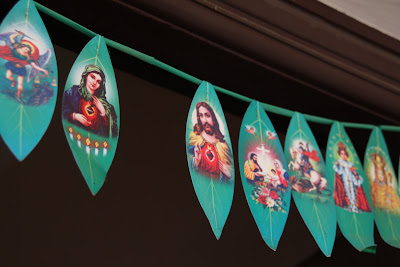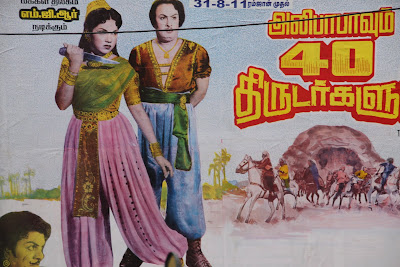On the way home from the airport, I was overcome by bittersweet emotions as I breathed in the Tamil Nadu air and voraciously absorbed all that is Tamil through my remaining senses- street and shop signs in the Tamil script, conversations and street callings in the Tamil language, and women clad in colorful saris with fresh jasmine flower garlands strung in their hair, bells ringing from their anklets and gold ornamenting their wrists, necks, and ears as they and their families fearlessly made their way to the local markets or to temples to worship. As I conversed about my family’s wellbeing and my work in Gaya with relatives, Tamil trickled off my tongue, and I felt something of a mother’s embrace in that moment- at ease and alive. From birth, we had visited both Eelam and Tamil Nadu every other year to visit family. In the latter, they were relatives who had fled the former in response to the 1983 riots of Black July. In the government-sponsored pogrom, thousands of Tamils were massacred, homes and shops burned to the ground, and tens of thousands more fled as refugees into the arms of other sympathetic and accepting mothers. It was a time I witnessed too young to remember now but has eternally scarred many far more than any physical wound is capable of.
I have the fondest memories of visiting Coimbatore as a child and enjoyed every moment playing tag and hide and seek with my cousins in their three-level rented home in Gandhipuram. My favorite hiding spot was up on the mottamaadi (rooftop) from where one could escape the chaos of the fast growing city and relax meditatively with views of Coimbatore, the sunrise, and the sunset. I loved walking down to Ukkadam and Oppanakkara streets with my Amma and our female relatives, who never passed up the opportunity to buy strings of mallikai poo (jasmine) or kanahaambaram poo, a small, orange colored flower, referred to as ‘paper flower’ in English, to loop into their long, black plaits. I indulged in the kadalai (garbanzo) and kajju (cashew nuts) we bought from a man who sold these roasted and wrapped in newspaper cones from his cart, as he announced his goods for sale throughout the streets of Gandhipuram, plastered with posters of Tamil movie stars cum ‘Gods’ cum politicians. It was incredibly comforting to experience this all again, though admittedly, a bit strange as well to do so on my first trip to Coimbatore without my immediate family.
 Tamil movie star cum politician campaign poster
Tamil movie star cum politician campaign poster Religious and cultural fusion
Religious and cultural fusion Craftsman enlays gold into a necklace; Coimbatore is renowned for its manufacture of gold jewelry
Craftsman enlays gold into a necklace; Coimbatore is renowned for its manufacture of gold jewelry Auto driver waiting for business
Auto driver waiting for business Increased flower sales during Vinayaka Chaturthi
Increased flower sales during Vinayaka Chaturthi Antique film posters of MGR, Chief Minister of TN in 1977, and a legendry figure of the Taml film industry
Antique film posters of MGR, Chief Minister of TN in 1977, and a legendry figure of the Taml film industry Cotton candy in Gandhipuram
Cotton candy in GandhipuramMassive statues of Vinayakar, commonly known as Ganesha, the elephant-headed Hindu deity of wisdom and good fortune, were erected in temporary mandapas throughout the city, and street vendors displayed hundreds of colorful clay statues of the deity for sale in a range of smaller sizes. The day following my arrival was Vinayaka Chaturthi, commencing a widely celebrated ten-day festival, honoring Vinayakar as superior to all other deities. Each Hindu home installs a clay Vinayakar, specifically purchased to celebrate the festival, and life is symbolically invoked into the statues through the chanting of mantras and offerings of coconut, jaggery, sweets, grass, flowers, vermilion, and sandalwood. Throughout the ceremony, hymns from the Rig Veda, Upanishads, and the Ganesha stotra are chanted. At the end of the poosai (ritual) in our home, I was asked to sing Carnatic songs in praise of the deity before we enjoyed prasaadam (food that has been first offered to God) in the form of delicious aval, a mixture of aval grains, grated coconut, jaggery, and sugar.
 A silver Ganesha murti
A silver Ganesha murti Ganesha, lord of wisdom and good fortune
Ganesha, lord of wisdom and good fortuneRelatives had flown in from all corners of the world to participate in the wedding of my cousin. We shuttled back and forth between relatives’ houses, visiting newly arrived relatives and indulging in meal after meal, snack after snack, and cup after cup of milky, sugary, tea. The gastronomical bliss could also be perceived as agony by the meek or simply an act of overindulgence. The day always starts with one of those ‘out of this world’ cups of tea that never fails to hit the spot, followed by a breakfast composed of idli and sambar or thosai with podi and sambal. Available throughout the day are king coconuts to quench one’s thirst with their fresh water and pulp, additional cups of tea or juice, fried snacks, such as vadai and samosas, and sweets interwoven between rice-and-curry lunches and dinners. I was naturally, then, a happy Coimbatore camper.
 My darling nephew, the newest member of the family
My darling nephew, the newest member of the family Traditional and auspicious Tamil vilaka or lamp
Traditional and auspicious Tamil vilaka or lampTraditional welcome to any Tamil Hindu wedding
After nearly three days of wedding festivities and a couple more indulging in both family and exquisite, silk sari shopping, it was with a heavy heart that I prepared for my journey back to Gaya, back to work. I was suddenly devastated to leave another de facto home and a place where a large part of my identity flourished. But, I know I’ll be back very soon.







No comments:
Post a Comment